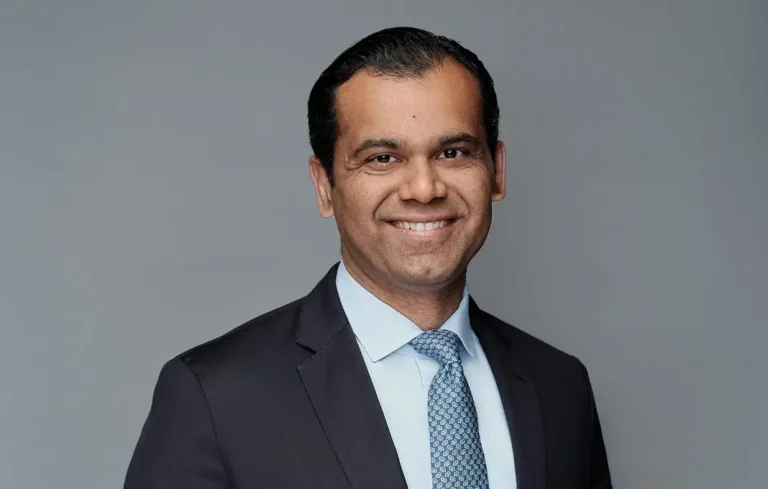Volatility is the new normal, and successful CFOs are embracing it.
said Mukshit Ashraf, group chief executive officer of Houston-based Accenture Strategy. Based on the findings of his firm's research report, Redefining Resilience: From Readiness to Reinvention, Ashraf explains how high-performing companies are using disruption as a catalyst for innovation.
Please tell us more about the mindset shift you think CFOs and other executives need to make to help companies become more proactive.
Volatility is no longer temporary, but structural. In this new era, the most successful companies are not only absorbing shocks, but also using them to rewire themselves for growth. This requires a shift in thinking at the top. Executives, especially CFOs, must move from reactive cost containment to proactive value orchestration.
Our research shows that less than 15% of companies consistently achieve profitable growth over the long term. What sets them apart is their deliberate commitment to reinvention, their ability to turn disruption into strategic advantage. The CFO is the central figure. They are no longer the guardians of finance, but are becoming the architects of corporate reinvention.
It starts with dynamically reallocating capital to not only protect margins but also foster transformation. It means rethinking your company based on four elements: technology, operations, people, and commercial strategy. That means using data and AI to drive decision-making on an ongoing basis rather than quarterly. And that means incorporating a “cognitive core,” or digital brain, that enables real-time sensing, analysis, and action.
CFOs need to champion integrated investments that drive sustainable growth, increase talent agility, and create organizational competitiveness. In other words, we must lead the transition from preparation to reinvention.
You write in your report that while resilience appears to be recovering, cracks are likely appearing in its foundations, and that “the future lies with companies that embrace adaptive resilience.” What does “adaptive resiliency” mean to CFOs and other executives, and how can they help businesses pivot resources quickly in response to unexpected market changes and disruptions?
Yes, resilience is returning, but unevenly. The performance gap between leaders and laggards widened by 17 percentage points. In this environment, adaptive resilience is key to long-term survival. It's not about bouncing back. It is important to move forward with agility, foresight and speed.
For CFOs and other executives, this means embracing four interconnected forms of resilience.
- Technology resilience: With 85% of executives increasing their investment in the AI generation, CFOs must lead the way in operationalizing AI to gain deeper insights, predict disruption, and automate decision-making. This is a question of economic performance, not technical strategy.
- Commercial resilience: As markets change, static financing models become debt. Dynamic capital allocation allows CFOs to redirect resources in real time, driving growth and protecting margins. Already, 42% of CFOs expect to implement Gen AI in customer service for this reason.
- People's resilience: 59% of CFOs plan to improve workflows through AI, but many organizations are under-investing in their talent. CFOs must rebalance the equation so that upskilling keeps pace with automation and workforce adaptability becomes a competitive advantage.
- Operational resilience: Gen AI can redefine supply chains, but only when combined with cash flow agility and diversified sourcing strategies. A quarter of CFOs already see their supply chains as ripe for transformation.
Adaptive resilience is not a siled effort. This is a company-wide function, and CFOs are uniquely positioned to institutionalize it.
Technology plays a key role in enabling predictive insights and operational visibility and building resilience, especially in areas such as data analytics, cloud, and AI. How can CFOs help invest in technology as part of that build-out, including deciding where to invest for maximum impact, especially at a time when companies want to limit their investments?
Technology is no longer an option, but the backbone of enterprise resilience. CFOs have a leadership role here and a unique ability to translate digital bets into business outcomes. Opportunity: Shift the narrative from technology as a cost center to technology as a growth engine.
Our research shows that if you allocate wisely, a 1% increase in total spending can lead to a 1.3% increase in revenue. Gen AI amplifies this potential. But too many companies invest too heavily in tools rather than people. The imbalance is clear as technology resilience increases (+3%) while people resilience decreases (-7%).
CFOs must drive prioritization by funding initiatives that embed AI across workflows, increase operational agility, and enable faster response to shocks. This means investing in platforms that not only enable efficiencies, but also enable reinvention of products, services, and decision-making itself. The CFO of the future will not only be a steward of capital, but also a champion of corporate reinvention.
Resilient organizations empower employees and foster a culture of adaptability. Why is it important for CFOs, finance leaders, and the entire C-suite to support efforts aimed at building resilience in the workforce?
The promises of AI and data are useless unless people are empowered to use them. Resilient organizations recognize that adaptability is built, not bought. CFOs and other executives must put workforce resilience at the center of their transformation agenda.
During the Great Resignation period, leading companies doubled down on talent development, investing in training, internal mobility, and leadership development. result? Increased innovation, lower turnover, and faster adaptation. Today, that lesson is more important than ever. Our research shows that companies that invest in both technology and people are four times more likely to achieve profitable growth over the long term. But most companies invest three times more in tools than in people.
CFOs can be thrown off balance. By partnering with CHROs, we can develop metrics that capture adaptability, such as speed of innovation and adoption of reskilling. They can advocate for funding that aligns workforce development with corporate reinvention. What's the result? We are a future-ready organization that leverages human capital as well as digital.

